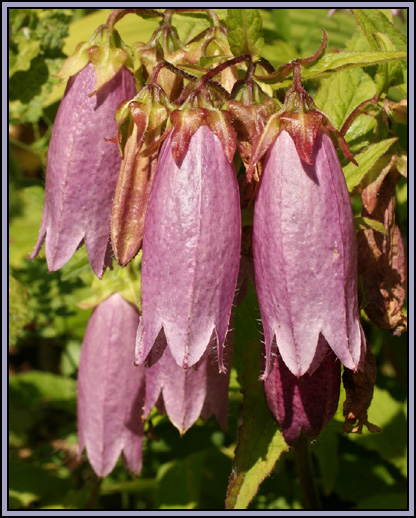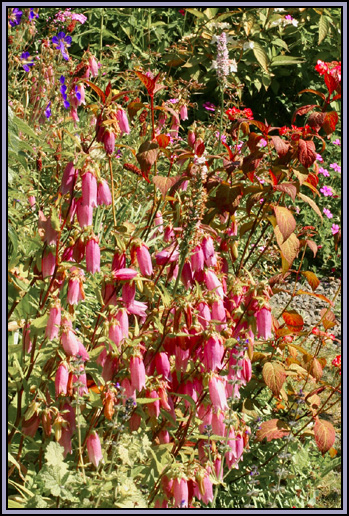| Campanula
punctata enjoys a widespread distribution throughout
Japan and Korea and may also be found in other parts of
Eastern Asia. As with many species which are both
widespread and generally occur in disjunct populations
there are bound to be named subspecies and varieties as
well as selected cultivars and hybrid deriratives. |
| The
particular variety illustrated here is Campanula
punctata var.
hondoensis. This variety has a sub-alpine distribution
in Japan and occurs throughout its mountain ranges, most
notably growing on the sacred Mount Fuji and Mount
Bandai. |
| It
flowers in July and can attain a height of 20 cm,
depending on local levels of exposure. In cultivation it
has a nasty reputation for running rampant over large
areas, a habit which probably comes in very handy when
colonising bare volcanic slopes. |
|
 |
|
|
 |
| Funnily
enough I've never found it to be that invasive and have
experienced no major problems controlling it, probably
because it turns out to be one of a number of alpine
plants which are apt to spread vigorously at first but
may then fade away when faced with anything like stiff
opposition from their neighbours. |
| It
has a very striking large flower which has earned it the
local name of Yama-Hotaru-Bukuro which, roughly
translated, means 'Mountain Firefly Pouch'. Allegedly
this name alludes to a bygone pastime of Japanese
children who used to keep pet fireflies in the
flowerheads. As with many Campanula species the seed is
quite dust-like and occasionally seedlings may crop up
anywhere. I'm lucky enough to have a completely white
form which now fills a large pot for which it was never
intended. |
| One
final culinary note. Apparently both flowers and leaves
are quite delicious to eat and can be used in salads and
soups. Surely every gourmet gardener should grow this
beautiful plant? |
|
|
 |
|
